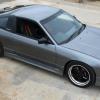What To Do Now?
Announcements
-
Similar Content
-
Latest Posts
-
And the rules change with time ...but speaking to the premise you raise here, some of us old farts will remember seeing every police motorbike with a rubber rear mudflap extension, fitted to the end of the rear mudguard. This was due to an ADR that required the rear mudguard to extend lower than the rear axle (iirc 15 degrees lower as measured at the axle center line)...it was changed in '89 updates, but basically before that date, any road going motorbike was technically 'illegal' (unroadworthy) ...the whole area is a real prickly pear... 😃
-
One thing that I will miss when I retire from full time is my access to the laboratory ovens at work we use for soils testing Jackie has forbade me from using the oven at home for curing paint...LOL The paint on the NC's OEM "strut" brace thingo was a little off, so some prep and some gloss black "Raptor" wheel paint I had left over made them all pretty again, the parts will sit in there overnight at 30°c and be ready to reinstall tomorrow
-
Just had a chance to have a read of this, exactly the type of info I was after thanks for that! Amazing that thread never showed up in search Yeah I'm definitely getting swayed away from the solid conversion, plenty of people getting impressive results without it







Recommended Posts
Create an account or sign in to comment
You need to be a member in order to leave a comment
Create an account
Sign up for a new account in our community. It's easy!
Register a new accountSign in
Already have an account? Sign in here.
Sign In Now